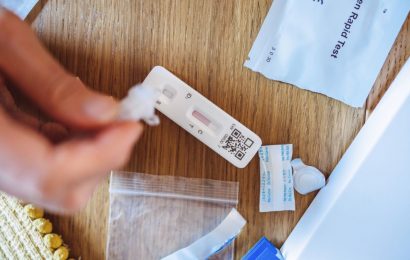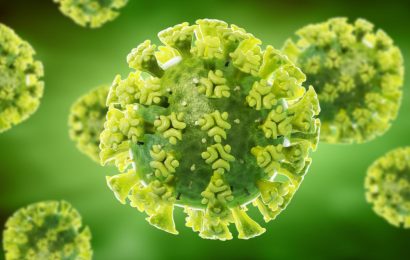A rare isotope in high demand for treating cancer is now more available to pharmaceutical companies developing and testing new drugs.
The U.S. Food and Drug Administration recently acknowledged receipt of Oak Ridge National Laboratory's drug master file for actinium-225 nitrate, which enables pharmaceutical companies to reference the document to support applications for their own Ac-225-based drugs without disclosing proprietary information.
The FDA requires an active pharmaceutical ingredient to have an active drug master file before it will approve products containing that ingredient. This file contains information about Ac-225 derived from thorium-229, including materials used in its preparation, and the current Good Manufacturing Practice processes involved in its production.
ORNL produces Ac-225 for the Department of Energy's Isotope Program, which then sells it for research and applications. To meet federal missions, facilitate emerging technology, reduce U.S. dependence on foreign supply and promote the country's economic prosperity and technical strength, the DOE Isotope Program provides critical isotopes that are in short supply.
Ac-225, a decay product of thorium-229, is used for targeted alpha therapy treatment for certain types of prostate, brain and neuroendocrine cancers. The high-energy alpha particles it releases can interrupt DNA processes, keeping cancer cells from replicating or even killing them altogether.
But Ac-225 doesn't occur naturally. ORNL, for the DOE Isotope Program, produces the bulk of the world's supply.
The promise of targeted alpha therapy is so great, demand for the radioisotope already outweighs the amount produced."
Laura Harvey, Oak Ridge National Laboratory
To augment the supply, the Isotope Program supports the production of Ac-225 through other methods as well, including with the use of accelerators.
Harvey is part of an ORNL team producing Ac-225 from a stockpile of thorium-229 stored at ORNL. A byproduct from past nuclear programs, the thorium material was separated and recovered to build ORNL's current inventory. Ac-225 is one of the key radioisotopes that occur as the thorium decays.
The thorium-229 stockpile periodically is processed to recover radium-225, which decays to the Ac-225 that is recovered and used in treatment of cancer. The radium-225 that accumulates becomes a secondary source of Ac-225. Each week, the ORNL team harvests Ac-225 for further purification and packaging for shipments that are sent to customers around the world for fundamental research, clinical trials and treatments.
"The whole benefit to the radioactive decay is that we don't have to do anything magical to the thorium to keep it producing Ac-225," said ORNL's Paul Benny. "It is a long-lived resource that we can continually harvest."
The science that allows separation of isotopes is the result of decades of groundbreaking radioisotope separation experiments at ORNL's High Flux Isotope Reactor and Radiochemical Engineering Development Center, with support from the DOE Isotope Program. ORNL first began work to extract Ac-225 from the thorium stockpile more than two decades ago, sending its first shipment in — to the National Cancer Institute — in 1997.
Meeting the FDA's current Good Manufacturing Practice requirements for a new active pharmaceutical ingredient typically takes a couple of years, but ORNL and the DOE Isotope Program developed a plan and implemented the requirements in 13 months for its onsite Ac-225 production. Harvey said lab-wide cooperation and support made that timeline possible.
ORNL also made a significant commitment to the Ac-225 effort, providing dedicated hot cell and glovebox space, storage space where materials can be secured and new equipment. The team — which includes technicians, custodians, managers and others — received specialized training for the process.
"Everybody at the lab worked so hard to make sure the Ac-225 program had what it needed to move forward," Harvey said.
That's because they realize the importance of the work, Benny said. Though Ac-225 is in clinical trials in the United States, other countries already have treated hundreds of cancer patients with Ac-225 and its decay daughter, bismuth-213. The DOE's Isotope Program manages distribution of the Ac-225 through the National Isotope Development Center.
A patient from Germany who had benefited from treatments with ORNL-produced Ac-225 went to the trouble to contact one ORNL scientist who was involved in earlier Ac-225 production, to thank her and let her know how his life had improved because of ORNL's efforts.
"Team members know some of the shipments are going directly to patients all over the world," Benny said. "It's exciting when you realize what we do matters and has a direct impact on people's lives. It can make a difference, when you can give people hope and the tools to fight cancer."
DOE/Oak Ridge National Laboratory
Posted in: Medical Condition News | Pharmaceutical News
Tags: Bismuth, Brain, Cancer, Cell, DNA, Drugs, Laboratory, Manufacturing, Prostate, Research
Source: Read Full Article


